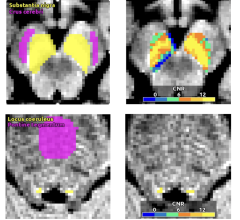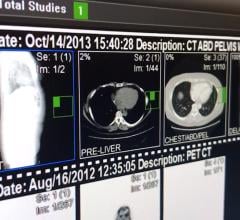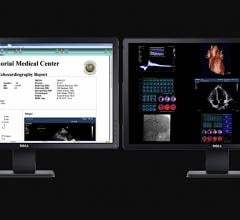
August 7, 2014 — A newly released study by IMV Medical Information Division shows cardiology departments in U.S. hospitals are moving beyond separate cardiovascular image management systems (cardiac picture archiving and communications systems [CPACS]) and information systems (CVIS), with an eye to the improved efficiency provided by integration with other capabilities such as radiology PACS, other departmental IT systems and the hospital’s EMR (electronic medical records) system.
The dual objectives of integrating cardiac PACS and CVIS information into one cohesive system while integrating with the hospital’s EMR system are reflected in the respondents’ ratings of their departmental priorities. Based on average ratings, the top two priorities rated are to “manage the integration of cardiovascular IT (CV-IT) systems with EMR” and “align CV-IT systems with workflow practices.”
“U.S. hospitals have made progress in integrating cardiology images with non-image data over the past four years,” said Lorna Young, senior director of market research at IMV. “Cardiologists need patient images to be integrated with related non-image patient information and structured reporting to improve diagnostic efficiency."
IMV’s study shows U.S hospitals are at various degrees of implementation along this path. More than three-quarters of the surveyed hospitals (77 percent) indicated they have both cardiac PACS and CVIS. An additional 17 percent have one system or the other, while only 6 percent of the hospitals have no formal implementation of either system. Of the sites that have both systems, nearly half indicated their cardiac PACS and CVIS are fully integrated, while the rest have not yet fully integrated these two systems.
While the evolution in the use of CV-IT systems has progressed, it is clear that the respondents do not feel their journey on the cardiology information continuum is complete. When asked where they felt their current implementation of cardiac PACS/CVIS is relative to their ideal, only 33 percent of the respondents reported they were more than three-quarters of the way to their ideal system. Continued investment in CV-IT systems is proceeding, with two-thirds of the sites planning to upgrade or implement a new or replacement cardiac PACS and/or CVIS over the next three years.
Despite their acknowledgement that the ideal architecture includes integration with the EMR or electronic health record (EHR) system, respondents feel their ideal CV-IT solution should not necessarily be integrated by their EMR/EHR vendor because of cardiology’s priority of aligning its CV-IT system with its workflow practices. In fact, a higher proportion of all the respondents are more likely to favor their current cardiac PACS or CVIS vendor, or even their radiology PACS vendor, to be the integrator for their ideal CV-IT solution than the EMR/EHR vendor. Having an enterprise-wide archive solution that is developed for cardiology, radiology and other hospital departments also is part of the vision.
IMV’s report identifies trends in the installed base market share of cardiac PACS, CVIS, radiology PACS and EMR/EHR vendors; respondent satisfaction with their cardiac PACS/CVIS; and vendors being considered for future implementations of their cardiovascular information technology over the next few years. Vendors covered in this report include Agfa, Allscripts, Carestream, Cerner, CPSI, DR Systems, Epic, GE, Fujifilm, Lumedx, McKesson, Meditech, Merge, Philips and Siemens.
In other report findings, cardiac catheterization and echocardiography images and structured reporting form the backbone of the ideal integrated cardiac PACS and CVIS, with either or both modalities specified by all the respondents. About half of the current CPACS users also mentioned that they currently have access to intravascular ultrasound, interventional radiology/angiography, and vascular ultrasound images from their cardiac PACS.
Of the survey respondents who have both radiology PACS and cardiac PACS, the top two components that are integrated/interfaced are the data archive infrastructure and a common patient-centric database.
The top three functional capabilities sought are critical results reporting, additional/enhanced structured reporting and mobile access (capability to view images on portable devices), which were preferred by half of the respondents.
IMV's new report, the "2014 Cardiology Information Continuum: Present Access and Future Integration Strategies for Cardiovascular Information Technology," is based on responses from 194 department administrators who are cardiac PACS decision-makers, including cardiovascular services administrators, IT and management information systems directors, cardiac PACS managers, and radiology administrators in U.S. hospitals that have at least one cardiac cath lab installed.
For more information: www.imvinfo.com


 August 26, 2025
August 26, 2025 









